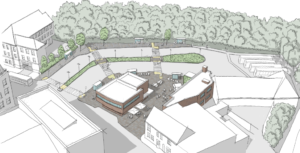The Environment Act and the Impact on Property Development
 Alice Davidson, Associate Director at Boyer, explains what the new minimum 10% Biodiversity Net Gain requirement means for developers.
Alice Davidson, Associate Director at Boyer, explains what the new minimum 10% Biodiversity Net Gain requirement means for developers.
After numerous delays, the Environment Bill has now entered the Statute Book, bringing into force a series of measures and environmental standards which will become mandatory following the end of the Brexit transition period.
The key provision for developers and investors to note is that the Act brings in a minimum 10% Biodiversity Net Gain (BNG) as a statutory requirement for new development and requires that this biodiversity gain is managed for a minimum of 30 years. Although the effective date is 2023 and the minimum requirement is a 10% offset, we have already seen many emerging Local Plans requiring a minimum 10% BNG ahead of the legislation taking effect, with some also seeking BNG of up to 20%.
Natural England’s Biodiversity Metric 3.0 demonstrates how requirements for 10% and 20% BNG should be measured, and how the alternatives to on-site provision – biodiversity credits and conservation covenants – will work.
Means of providing BNG
- On-site: enhancing and adding new habitats within the development itself
- Off-site: enhancing off-site habitats either through the purchase of land or by funding a landowner, to enhance biodiversity on their land
- Purchase of biodiversity credits which fund off-site enhancements elsewhere
Where it already exists, BNG is posing a viability challenge for developers, both in the case of creating net gain within existing sites or allocations, and where it is necessary to acquire additional land for that purpose.
Concerns largely focus on value. Greenfield sites with a relatively high existing biodiversity value will become more expensive to develop because the requirement to achieve a minimum 10% net gain will come at a considerable cost. This is because larger areas will need to be set aside for ecological enhancements such as the planting of orchards and wildflower meadows, and consequently housing numbers may need to be reduced.
There’s also financial implication to delivering off-site BNG. This will be an additional, possibly unexpected and unprepared for cost. Its impact will vary depending on the supply and demand for suitable land – which will rise in areas where it is most sought after. In circumstances in which development sites have been purchased prior to developers’ knowledge of the introduction of BNG, this increased cost must be met and could result in higher house prices and / or a reduction in planning gain requirements (where possible) including affordable housing and community contributions. Where sites have not yet been acquired, developers may seek a reduction in the land price to reflect the increased expense – with the landowner feeling the hit.
However, there are winners as well as losers. Those who own land which may be unsuitable for development but is suitable for off-setting – typically land lacking in biodiversity but which has potential for a significant uplift, such as previously farmed land, will see an increase in values especially if there are high levels of development in the area. But while this is good news for some landowners, not all non-developable sites will be considered suitable. For example, surface water flooding or ground contamination may impact a site’s ability to be used for off-setting purposes. Equally if a site is already rich in biodiversity, it may not be possible to achieve the required 10% net gain.
A third option is for developers to purchase biodiversity credits. Through a scheme likely to be implemented by central Government, but of which the details are not yet known, biodiversity credits will enable developers, in some circumstances, to off-set the impact of biodiversity loss elsewhere in the country. However, the aspiration to achieve higher levels of biodiversity applies across the country, and so it is thought unlikely that the Government will encourage the offsetting of development land in the home counties through biodiversity secured in the Scottish Highlands, and therefore will make this most expensive option to deter its over-use.
There is no doubt that the impact of BNG will be substantial: we expect it to be a key consideration in the allocation of development in new Local Plans, through Local Nature Recovery Strategies, as well as a determining factor in the acquisition of new sites. Questions regarding changes in viability and values abound, and both local authorities and land promoters will need to be realistic in their expectations. This will be particularly important for commercial sites, or those within urban areas, both of which do not typically include substantial quantities of open space.
As planning consultants to both commercial and residential developers, and with a Land division within Leaders Romans Group which represents landowners’ interests, our focus at Boyer will be on ensuring a robust habitat assessment for any potential development scheme from the outset, as this will be the baseline against which BNG will be assessed. Demonstrating a site’s ability to achieve at least 10% BNG will be an important consideration, from the point of purchase through to planning committee, and potentially impacting planning appeals: the significant impact of the Environment Act on the bottom line, for both landowners and developers cannot be underestimated.
Alice Davidson is an Associate Director at Boyer with over 8 years’ experience in the public and private sector. Alice works on a variety of projects but specialises in securing residential planning permissions and promoting land for residential development in the Thames Valley.
Photo by Palle Knudsen
















